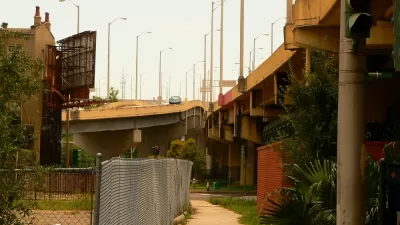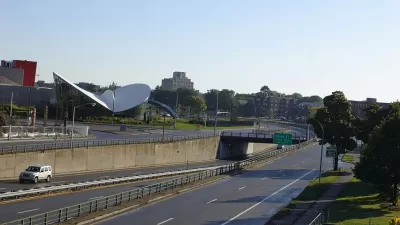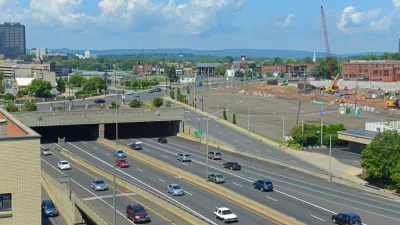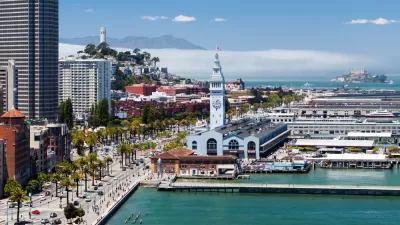The Congress for New Urbanism has once again released on if its signature efforts: the Freeways Without Futures report that assumes urban freeways were a mistake of 20th century planning and engineering and advocates for a new approach.

The Congress for New Urbanism released its 2019 Freeways Without Futures report this week, listing ten freeways around the country that could provide new examples of how cities "can save money while boosting their economies and improving the lives of citizens by not repeating the mistakes of the 20th Century."
- Claiborne Expressway (I-10), New Orleans, Louisiana
- I-275, Tampa, Florida
- I-345, Dallas, Texas
- I-35, Austin, Texas
- I-5, Portland, Oregon
- I-64, Louisville, Kentucky
- I-70, Denver, Colorado
- I-81, Syracuse, New York
- I-980, Oakland, California
- Kensington and Scajaquada Expressways, Buffalo, New York
According to the website promoting the report and providing detail on each of the ten freeways listed, the report addresses fundamental questions: "Do we continue to funnel billions of taxpayer dollars into an aging system that pollutes cities, divides neighborhoods, and occupies valuable land that could instead be used for homes and businesses? Or is there an alternative solution that creates stronger cities and communities?"
Claire Tran shared the news about the new Freeways Without Futures report for CityLab.
FULL STORY: Freeways Without Futures

Maui's Vacation Rental Debate Turns Ugly
Verbal attacks, misinformation campaigns and fistfights plague a high-stakes debate to convert thousands of vacation rentals into long-term housing.

Planetizen Federal Action Tracker
A weekly monitor of how Trump’s orders and actions are impacting planners and planning in America.

In Urban Planning, AI Prompting Could be the New Design Thinking
Creativity has long been key to great urban design. What if we see AI as our new creative partner?

King County Supportive Housing Program Offers Hope for Unhoused Residents
The county is taking a ‘Housing First’ approach that prioritizes getting people into housing, then offering wraparound supportive services.

Researchers Use AI to Get Clearer Picture of US Housing
Analysts are using artificial intelligence to supercharge their research by allowing them to comb through data faster. Though these AI tools can be error prone, they save time and housing researchers are optimistic about the future.

Making Shared Micromobility More Inclusive
Cities and shared mobility system operators can do more to include people with disabilities in planning and operations, per a new report.
Urban Design for Planners 1: Software Tools
This six-course series explores essential urban design concepts using open source software and equips planners with the tools they need to participate fully in the urban design process.
Planning for Universal Design
Learn the tools for implementing Universal Design in planning regulations.
planning NEXT
Appalachian Highlands Housing Partners
Mpact (founded as Rail~Volution)
City of Camden Redevelopment Agency
City of Astoria
City of Portland
City of Laramie





























